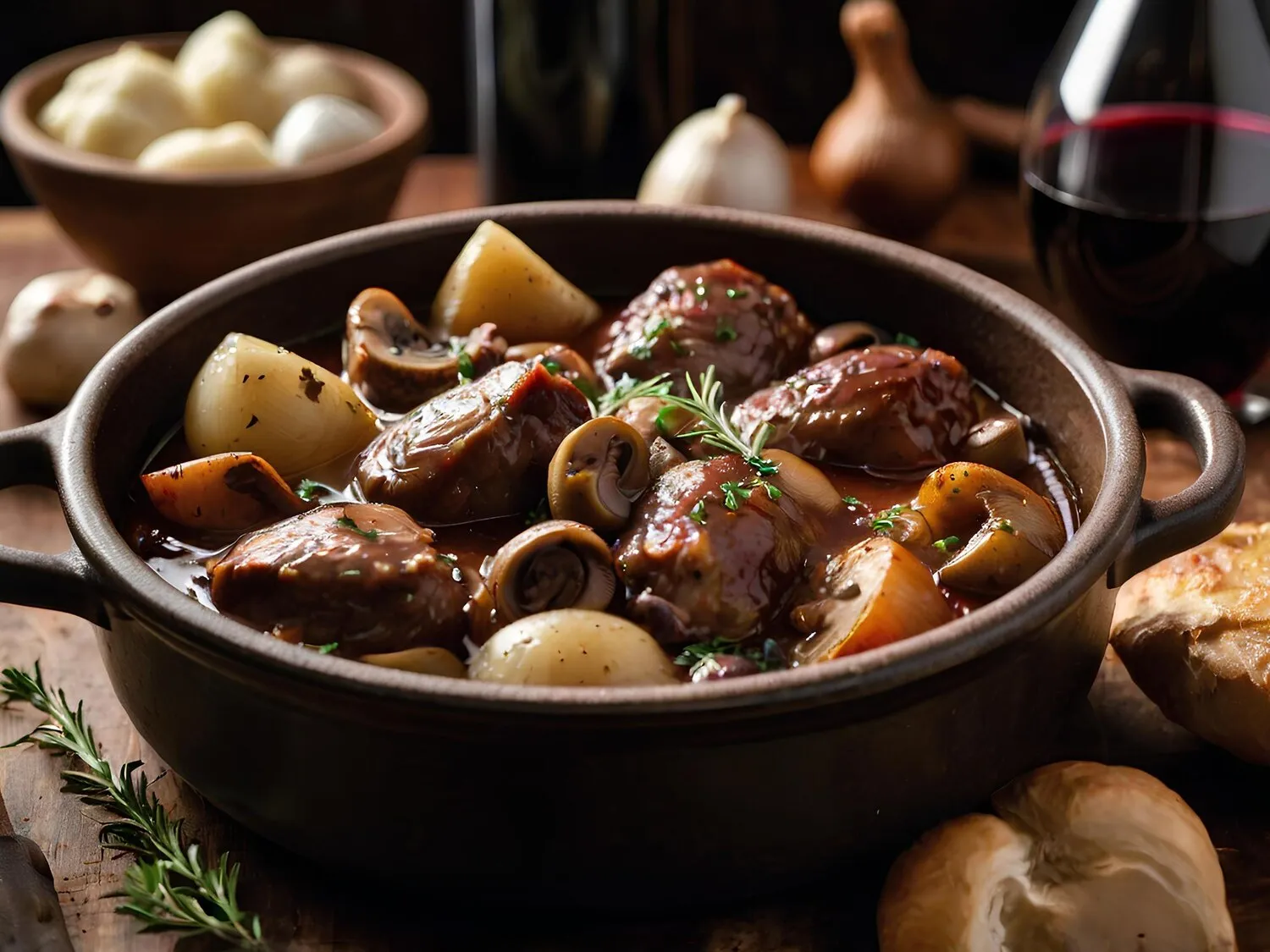
Rillettes de Tours
A traditional pork spread from the Tours region, often served with bread.
Nutrition Facts
* The % Daily Value (DV) tells you how much a nutrient in a serving of food contributes to a daily diet. 2,000 calories a day is used for general nutrition advice.
Rillettes, including Rillettes de Tours, have a long history in France, originating as a way to preserve meat before refrigeration. The process of confit, slow-cooking meat in its own fat, dates back centuries, and became a regional specialty in various parts of France, each with its own variations and techniques.
Rillettes de Tours is more than just a food; it's a symbol of the Loire Valley region, reflecting its culinary heritage and connection to local farming practices. It’s a staple at gatherings and a testament to traditional preservation methods.
Regional Identity
Rillettes de Tours is deeply associated with the city of Tours and the surrounding Loire Valley. It is considered a regional delicacy and a source of local pride.
Aperitif Staple
Rillettes is often served as part of an aperitif, spread on crusty bread or toast points, accompanied by cornichons and a glass of local wine, typically a crisp white wine from the Loire Valley.
Celebratory Occasions
It is frequently enjoyed during festive occasions and family gatherings, symbolizing a shared culinary tradition and a connection to the region's agricultural heritage.
Rillettes de Tours boasts a rich, savory flavor profile deeply rooted in pork fat, enhanced by subtle seasoning and the natural sweetness of slow-cooked meat.
The primary flavor is intensely porky, derived from the shoulder or belly of the pig being slow-cooked in its own fat. Salt is essential for preservation and brings out the meaty flavors. Other common seasonings include pepper, garlic, and sometimes herbs like thyme or bay leaf, which provide subtle aromatic notes. The extended cooking process yields a tender, melting texture and a concentrated, almost caramelized sweetness from the pork.
Meat Selection
Use a cut of pork with a good amount of fat, such as shoulder or belly. The fat is essential for the slow cooking and preservation process.
Low and Slow Cooking
Maintain a very low temperature during cooking to allow the meat to break down and become incredibly tender. Avoid boiling, as this will toughen the meat.
Proper Seasoning
Don't be afraid to season generously with salt, as it plays a crucial role in preservation. Taste and adjust seasoning as needed throughout the cooking process.
Shredding Technique
After cooking, shred the meat while it's still warm, but not too hot to handle. This will help create the characteristic spreadable texture.
Storage
Pack the rillettes tightly into sterilized jars and cover with a layer of rendered fat to seal and preserve them. Store in the refrigerator for several weeks or even months.
Explore additional Traditional French dishes and restaurants
Explore Traditional FrenchDiscover top dining spots and culinary experiences in Tours.
Explore ToursLearn more about the food culture, restaurant scene, and culinary heritage of France.
Explore France